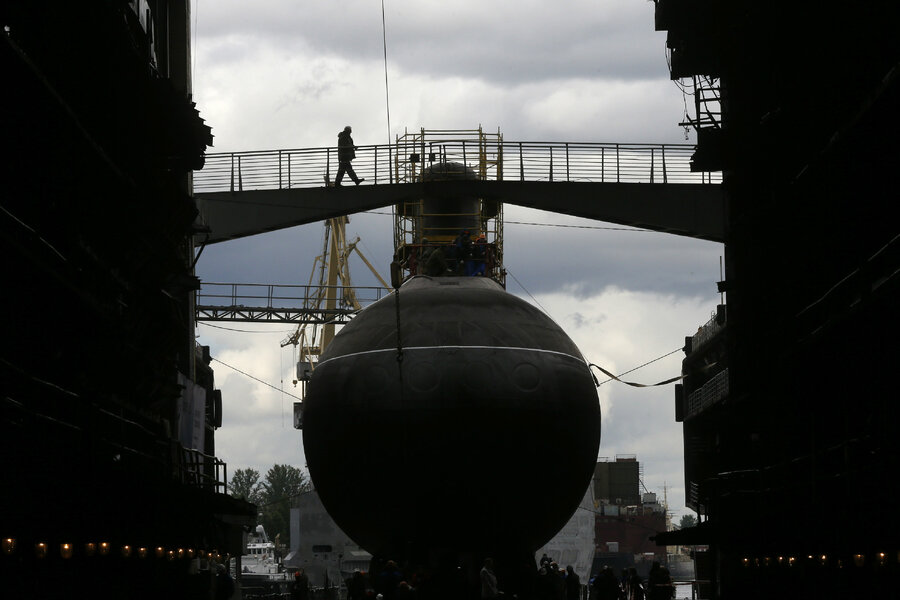Why undersea Internet cables still power our 'wireless' world
Loading...
Not many people realize that undersea cables transport nearly 100% of transoceanic data traffic. These lines are laid on the very bottom of the ocean floor. They’re about as thick as a garden hose and carry the world’s internet, phone calls and even TV transmissions between continents at the speed of light. A single cable can carry tens of terabits of information per second.
While researching my book The Undersea Network, I realized that the cables we all rely on to send everything from email to banking information across the seas remain largely unregulated and undefended. Although they are laid by only a few companies (including the American company SubCom and the French company Alcatel-Lucent) and often funneled along narrow paths, the ocean’s vastness has often provided them protection.
Far from wireless
The fact that we route internet traffic through the ocean – amidst deep sea creatures and hydrothermal vents – runs counter to most people’s imaginings of the internet. Didn’t we develop satellites and Wi-Fi to transmit signals through the air? Haven’t we moved to the cloud? Undersea cable systems sound like a thing of the past.
The reality is that the cloud is actually under the ocean. Even though they might seem behind the times, fiber-optic cables are actually state-of-the-art global communications technologies. Since they use light to encode information and remain unfettered by weather, cables carry data faster and cheaper than satellites. They crisscross the continents too – a message from New York to California also travels by fiber-optic cable. These systems are not going to be replaced by aerial communications anytime soon.
A vulnerable system?
The biggest problem with cable systems is not technological – it’s human. Because they run underground, underwater and between telephone poles, cable systems populate the same spaces we do. As a result, we accidentally break them all the time. Local construction projects dig up terrestrial lines. Boaters drop anchors on cables. And submarines can pinpoint systems under the sea.
Most of the recent media coverage has been dominated by the question of vulnerability. Are global communications networks really at risk of disruption? What would happen if these cables were cut? Do we need to worry about the threat of sabotage from Russian subs or terrorist agents?
The answer to this is not black and white. Any individual cable is always at risk, but likely far more so from boaters and fishermen than any saboteur. Over history, the single largest cause of disruption has been people unintentionally dropping anchors and nets. The International Cable Protection Committee has been working for years to prevent such breaks.
As a result, cables today are covered in steel armor and buried beneath the seafloor at their shore-ends, where the human threat is most concentrated. This provides some level of protection. In the deep sea, the ocean’s inaccessibility largely safeguards cables – they need only to be covered with a thin polyethelene sheath. It’s not that it’s much more difficult to sever cables in the deep ocean, it’s just that the primary forms of interference are less likely to happen. The sea is so big and the cables are so narrow, the probability isn’t that high that you’d run across one.
Sabotage has actually been rare in the history of undersea cables. There are certainly occurrences (though none recently), but these are disproportionately publicized. The World War I German raid of the Fanning Island cable station in the Pacific Ocean gets a lot of attention. And there was speculation about sabotage in the cable disruptions outside Alexandria, Egypt in 2008, which cut 70% of the country’s internet, affecting millions. Yet we hear little about the regular faults that occur, on average, about 200 times each year.
Redundancy provides some protection
The fact is it’s incredibly difficult to monitor these lines. Cable companies have been trying to do so for more than a century, since the first telegraph lines were laid in the 1800s. But the ocean is too vast and the lines simply too long. It would be impossible to stop every vessel that came anywhere near critical communications cables. We’d need to create extremely long, “no-go” zones across the ocean, which itself would profoundly disrupt the economy.
Fewer than 300 cable systems transport almost all transoceanic traffic around the world. And these often run through narrow pressure points where small disruptions can have massive impacts. Since each cable can carry an extraordinary amount of information, it’s not uncommon for an entire country to rely on only a handful of systems. In many places, it would take only a few cable cuts to take out large swathes of the internet. If the right cables were disrupted at the right time, it could disrupt global internet traffic for weeks or even months.
The thing that protects global information traffic is the fact that there’s some redundancy built into the system. Since there is more cable capacity than there is traffic, when there is a break, information is automatically rerouted along other cables. Because there are many systems linking to the United States, and a lot of internet infrastructure is located here, a single cable outage is unlikely to cause any noticeable effect for Americans.
Any single cable line has been and will continue to be susceptible to disruption. And the only way around this is to build a more diverse system. But as things are, even though individual companies each look out for their own network, there is no economic incentive or supervisory body to ensure the global system as a whole is resilient. If there’s a vulnerability to worry about, this is it.
Nicole Starosielski is an Assistant Professor of Media, Culture and Communication at New York University.





